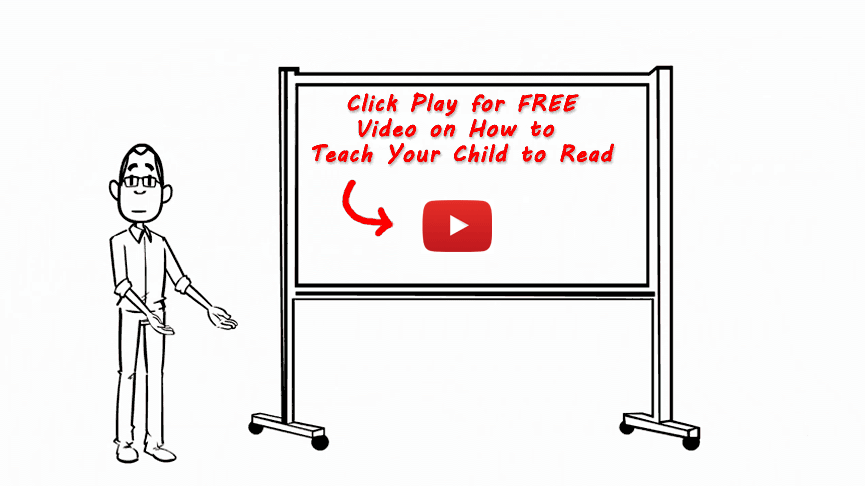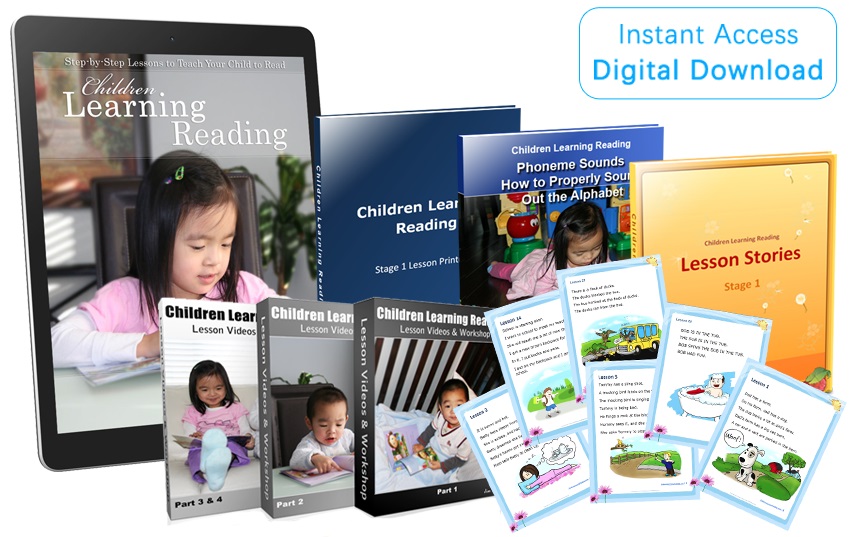Still under construction… (The high quality, colorful worksheets designed to engage children in fun and stimulating phonics and phonemic awareness activities are available to be purchased here along with the Children Learning Reading Program. The low quality Phoneme Isolation worksheets: Coming Soon)
Phoneme Segmentation Worksheets Will Help Develop Your Child Into A Very Proficient Reader
Now that you know all about the Children Learning Reading program and how it can help your child to learn to read in just 12 weeks we want to tell you about the incredible worksheets that you can order alongside the program to really make learning to read fun for your child.
Here we will discuss a very important reading skill called phonemic segmentation and there are colourful worksheets available for this activity which will accelerate your child’s reading development.
Phoneme Segmentation Explained
It is possible to break apart or segment any word to differentiate the phonemes or sounds that the word has. To identify how many phonemes a word contains the word should be spoken out loud and concentrate on the sounds that are heard rather than reading the letters.
As an example of this, when your child says the word “cat” they will hear that the word comprises three phonemes or sounds /c/. /a/ and /t/. The English language has around 40 phonemes or sounds as there are a number of different ways that the letters of the alphabet can be arranged or used.
Think about the sound or phoneme /f/ which you can spell using the letters “ph”, “ff” or just plain “f”. As a teacher you must be good at segmenting words and indentifying the number of phonemes so that you can help your child.
This is a very important part of the phonemic awareness skills that your child needs to become a fluent reader. When presented with a complete word your child will be able to speak all of the different sounds that go to making the complete word. They will be able to “decode” the word into its individual sounds. So as an example to properly segment the word “cat” they would have to know the three individual sounds /c/, /a/ and /t/.
You may be wondering why this is so important. Your child needs to be able to distinguish each individual sound component or phoneme of a word and understand that when these are combined they create the whole word. It teaches your child decoding skills and with these skills they will be able to look at any printed word and break it down into its individual sounds. This will enable them to pronounce most words correctly as their reading skills develop.
The development of phonemic awareness skills is critical for a young child (or even an older child or adult) to learn to read successfully. Fluent readers all have good phonemic awareness skills and the good thing is that it is a simple concept to grasp and even the youngest of children can learn the necessary skills. Once your child can speak, you can help them to learn how to read by developing their phonemic awareness skills.
Phonemic Segmentation Is Very Important
By the time children are at school they either develop phonemic segmentation skills or they don’t. On average 75% of kids can isolate, manipulate and blend sounds in a fluent manner but 25% struggle with this. Teaching phonemic segmentation to your child at an early age will give them a clear advantage in the school years.
Teaching phonemic segmentation is an essential part of your child’s writing development skills. To be able to write effectively a child will need to decode the words into their component sounds and choose the right letters that the sounds represent.
Phonemic segmentation is a fundamental to building literacy skills in your child and it is part of phonological awareness development and children that have good phonological awareness abilities usually go on to have strong literacy skills.
An Example Of Phoneme Segmentation Training
The object of phoneme segmentation training is to get your child to listen to an orally presented target sound and work out which word that starts with this target phoneme. They will then say the word out loud or select it from an appropriate image or symbol. You should aim for an accuracy level of around 80%.
You can practice phoneme segmentation almost anywhere with your child. It will stop them from being bored so if you are waiting in line at a store or travelling in the car get them working on their segmentation skills.
It is best to start with a short word such as “cat” and you can guide them to speak each sound of the letters that make up the word. It is a good idea to encourage them as much as possible so ask them to clap or sing when they get a sound right.
A good technique is to tell your child to imagine they are stretching a rubber band as they speak each individual phoneme. And when they say the completed word the band snaps back to its un-stretched position. Other real aids can be used such as pictures, cards and blocks.
A Phonemic Segmentation Example Task
This is an example of how to teach phonemic segmentation to children: You will need to be prepared here with some example pictures or word cards that can be used by the child to respond.
- Say the sound of the letter to the child (do not say the name of the letter)
- Your child will listen to the sound that you make
- The child will then take a look at the images or cards that you have presented to them. You could have examples of cat, dog, top and book.
- Your child will then segment the phoneme of the initial sounds of the four words which are shown to them.
- The child will then be asked to identify which word begins with the target sound for example “c” in the word cat.
- Your child will then be prompted to speak the word out loud or touch the appropriate image or card.
Worksheets For Phoneme Segmentation
You can order our phonemic segmentation worksheets along with the Children Learning Reading program. The worksheets come with full instructions which will tell you how to use them so that your child will find them fun and engaging.
The worksheets have different images on them and you can print them out and your child can write the individual letters of the words that the images depict.
So for example if they see an image of a cat they can write the individual letters beneath the image /c/. /a/ and /t/. You can work with them so that they “sound out” all of these phonemes properly. Your child will find the worksheets stimulating and great fun and will enjoy practicing their phoneme segmentation skills with you.
The worksheets will assist your child in distinguishing and hearing the component sounds that make up the complete word.
To teach your young child how to read in just 12 weeks click here to discover the Children Learning Reading program





